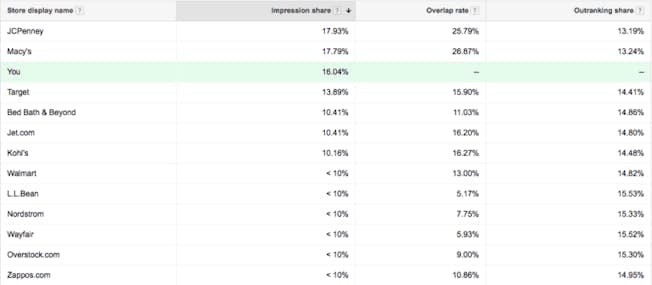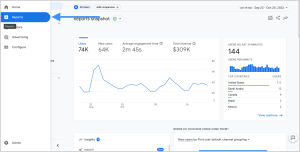
Unveiling the Competition: A Guide to PPC Competitive Analysis

Pay-per-click (PPC) advertising offers a powerful tool to boost brand awareness, generate leads, and drive targeted traffic to your website. However, the competitive landscape can be fierce, with numerous rivals vying for the same audience.
This is where competitive analysis becomes your secret weapon. By analyzing your competitors’ PPC strategies, you gain valuable insights that can elevate your own campaigns. Here’s a 6-step roadmap to guide you:
1. Identify Your Competitors:
This is the groundwork. Utilize keyword research tools to pinpoint brands bidding on the same keywords as you. Look for them in search results and consider industry publications that mention your competitors.
2. Decipher Their PPC Strategies:
Uncover your competitors’ overall PPC approach. Are they focusing heavily on search engine results pages (SERPs) or are they incorporating display advertising on other websites or social media platforms? Understanding their broader strategy can give you a holistic view of their approach.
3. Analyze Their Ad Copy and Landing Pages:
What messaging are your competitors using in their ads? What benefits or promotions are they highlighting? Analyze their ad copy to gain inspiration for crafting compelling messages that resonate with your target audience.
4. Identify Their Target Audience:
Who are your competitors targeting? Understanding their ideal customer profile allows you to refine your own targeting strategy and ensure you’re reaching the right people with your campaigns.
5. Analyze Their Budget and Ad Spend (Optional):
While not always possible with complete accuracy, some competitive analysis tools can provide estimations of your competitors’ ad spend. This can be a helpful benchmark, but remember – it’s an estimate, not a definitive number.
Step 1: Know Your Rivals – Identifying Your PPC Competitors
Every competitive analysis starts with a core question: who are you up against? Don’t underestimate this step, even if you’re an established player. New companies can enter the market or existing ones may expand their reach, becoming your competitors.
Uncover Your Competitors:
Here’s a two-pronged approach to identify your PPC rivals:
Internal Knowledge: Leverage your sales and marketing teams’ expertise. They likely have a good understanding of your industry landscape and who the key players are.
External Tools: Utilize powerful tools like SEMrush, which allows you to conduct in-depth ad research. Additionally, Google Ads Auction Insights provides valuable insights into your competitors’ ad strategies, bidding approaches, and campaign performance relative to yours.

Step 2: Deciphering Your Competitors’ PPC Playbook
Now that you’ve identified your competitors, it’s time to delve into their PPC strategies. Additionally, consider how they might be integrating SEO and PPC efforts to dominate both organic and paid search channels.
Unveiling Their Keyword Strategy:
Leverage Existing SEO Research: If you’ve already conducted SEO competitive analysis, you have a head start. You likely have insights into the keywords your competitors rank for organically.
Dive Deeper into Paid Keywords: However, don’t stop there. PPC campaigns often utilize different keywords than organic strategies. Tools like SEMrush’s Keyword Gap tool can be invaluable. They reveal which keywords your competitors are bidding on for paid advertising, potentially uncovering valuable terms you might be missing.
Prioritize Keyword Value: Look beyond just search volume. Analyze the Cost-Per-Click (CPC) to gauge how cost-effective each keyword is. This data helps you identify potential gaps in your keyword strategy and prioritize terms that offer a high return on investment (ROI).
Step 3: Decode Your Competitors’ Messaging: Ad Copy and Landing Pages
Compelling content is the cornerstone of successful PPC campaigns. If your ad copy and landing pages fail to resonate with your audience, clicks and conversions will plummet. Here’s where analyzing your competitors’ efforts provides valuable insights.
Ad Copy Under the Microscope:
Unearthing Unique Selling Points (USPs): How are your competitors positioning their products or services in their ad copy? What unique benefits or selling points do they emphasize? Analyze their messaging to identify potential gaps in your own value proposition.
Deciphering the Tone: What tone of voice do your competitors use in their ads? Is it formal, friendly, or humorous? Understanding their approach can help you determine the most effective tone to resonate with your target audience.Visual Appeal: What visuals or video content are your competitors using to grab attention and drive clicks? Analyze their creative choices to inspire your own ad design.Call to Action (CTA) Analysis: What type of CTAs (calls to action) do your competitors use? Are they clear, concise, and compelling? Analyzing their CTAs can give you ideas for crafting strong CTAs that encourage users to take action.
Cohesive Branding: Do the colors used in their ads align with their overall brand identity? Maintaining brand consistency is crucial. Analyze their approach to ensure your own ads seamlessly reflect your brand.
Step 4: Unveiling Your Competitors’ Target Audience and Budget
Understanding your competitors’ target audience and budget allocation is crucial for refining your own PPC strategy.
Demystifying Their Target Market:
Research Their Targeting: Analyze which channels your competitors utilize for their PPC campaigns. Are they focusing on B2B audiences targeting specific job roles or seniority levels? Or are they reaching out to B2C consumers with specific age or gender demographics?
Leverage Audience Identification Tools: Utilize resources like SimilarWeb, Ahrefs, or Google Ads Keyword Planner to gain insights into your competitors’ target audience personas. This can help you identify potential customer segments you might be missing.
Budget Allocation and Competitive Intelligence:
Unlocking Budget Secrets (Estimation): While obtaining exact competitor budgets can be challenging, ad intelligence tools like Spyfu or AdGooroo can provide estimations. Combine this data with other tactics to build a clearer picture.
Search Ranking Analysis: Analyze competitor rankings in search results. Higher organic rankings often indicate strong content targeting relevant keywords, which might suggest a focus on a specific audience segment.
Ad Monitoring: Track competitor ad appearances. How often do their ads pop up? This can offer clues about their budget allocation and potentially reveal peak advertising periods.
Social Media Footprint: Scrutinize your competitors’ social media presence. The tone, content, and audience engagement on their social media platforms can reveal valuable insights into their target audience.
Industry Network: Connect and network with industry players. While they might not disclose exact budgets, conversations can provide valuable intel on common budget allocation strategies within your competitive landscape.
In this article, we discussed the function and importance of SEO in the digital world. If you are interested, you can learn more about digital marketing and Google advertising by viewing other articles on the Kayoads website.

Website desgin
Using our website design and development service with KayoAds

Android & IOS
Broaden your business horizons with top-notch mobile app development services

SEO Tools
At Kayoads, we specialize in delivering top-notch SEO optimize services




